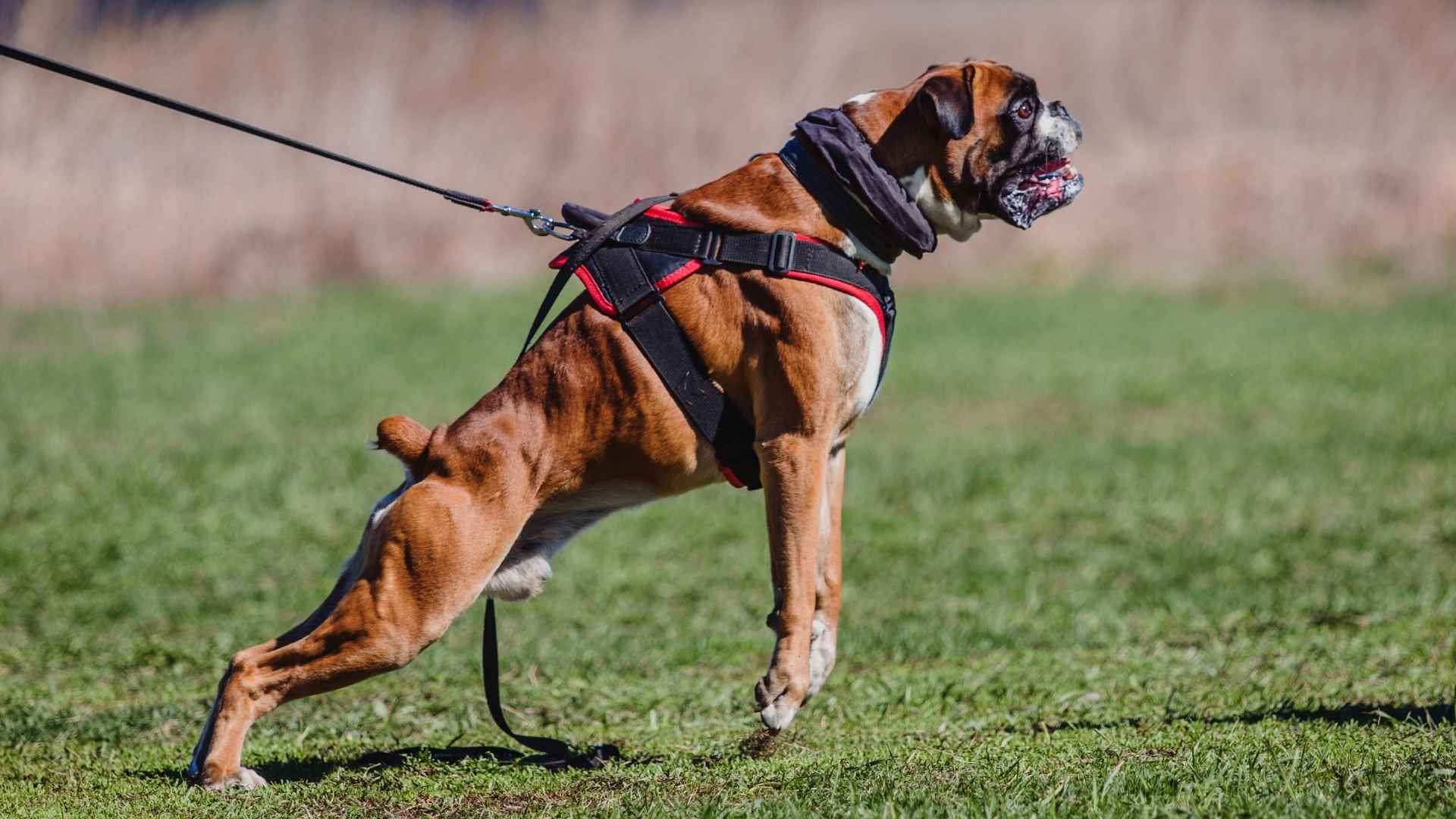Some dogs are more than just couch buddies—they were purposefully bred for muscle and stamina. These working dogs have excelled at duties ranging from guarding livestock to rescue work, and none take pulling sleds lightly.
For serious fans of canine strength, there’s actual evidence of how powerful they can be: in 2017, a 150‑pound giant Alaskan Malamute named Delbert pulled an astonishing 5,400 pounds in a weight‑pull competition, setting an official record and proving just how capable these animals are.
That raw power is part of why these dog breeds remain so impressive. Built with muscular build, high endurance, and high energy, they thrive in cold climates and can easily haul heavy loads—but only when properly trained and given mental stimulation.
These are the kinds of canines that truly live up to the “dog as powerlifters” concept—they can pull weights day after day, haul heavy loads across tough terrain, and still offer companionship and loyalty.
Ready to meet the runners, haulers, and canine powerhouses of the working dog world? Let’s take a look at the dog breeds that pull heavy loads for training.
Dog Breeds That Pull Heavy Loads for Training
1. Alaskan Malamute

The Alaskan Malamute may look similar to the smaller Siberian Husky, but it was bred for a very different purpose.
While the sleeker Husky focused on speed and endurance to pull sleds across long distances, the Malamute was developed for sheer strength. These dogs were used not just for pulling sleds but also for hunting seals, polar bears, and other powerful prey in the harsh Arctic.
Malamutes have been hauling cargo across Alaska for thousands of years, long before snowmobiles existed. They have a massive frame, thick muscles, and a muscular build that allows them to pull heavy loads in cold climates.
Many people think Malamutes are wolf-dog hybrids, but today’s breed is fully domesticated. They’re sweet, loving, and extremely loyal, making them great family pets for experienced owners. However, they do best in homes with plenty of space to roam, along with proper training, mental stimulation, and regular exercise.
Quick Facts
Height: 25 inches (male); 23 inches (female)
Weight: 85 pounds (male); 75 pounds (female)
Lifespan: 10–14 years
Energy Level: High
2. Saint Bernard
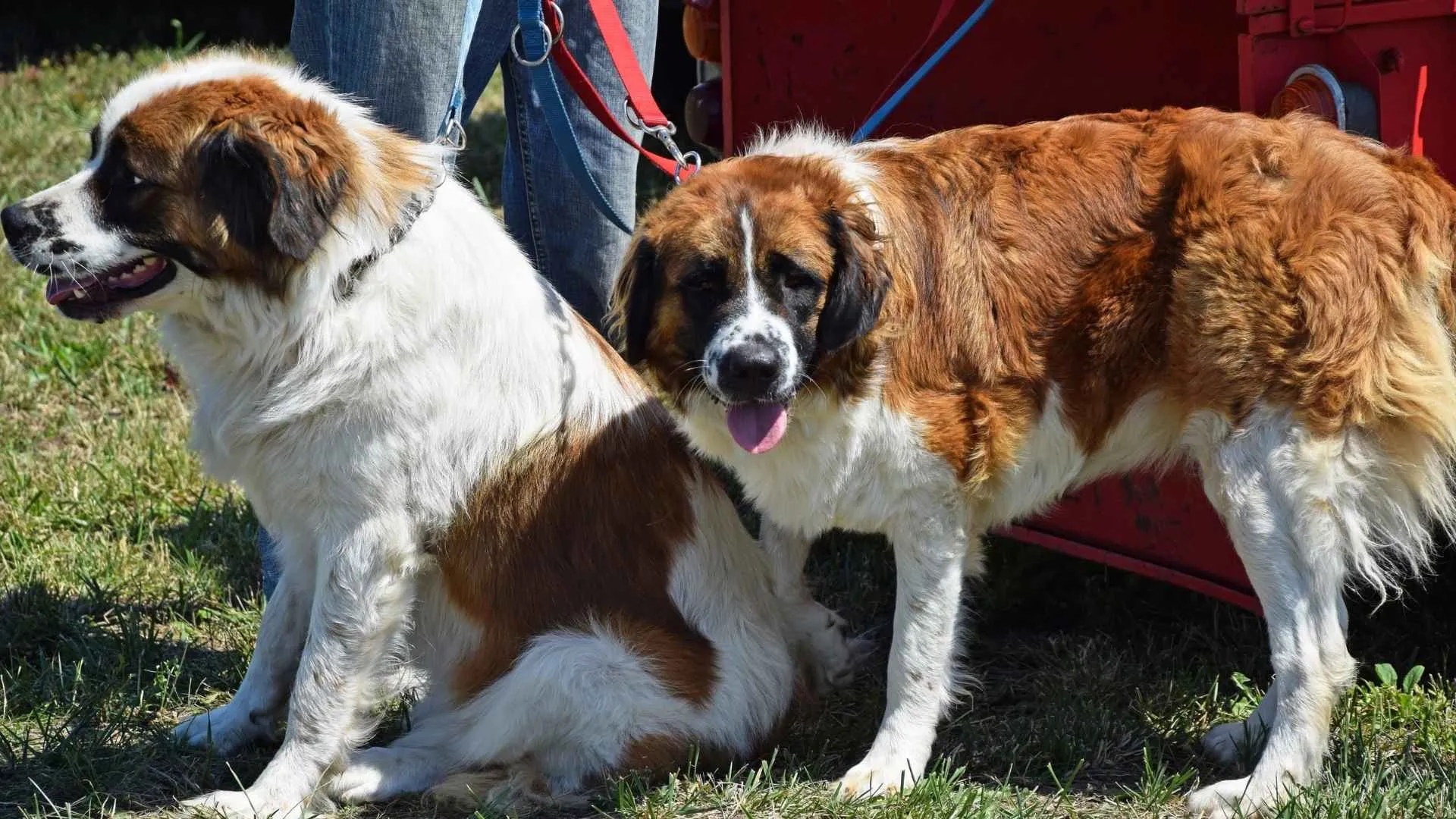
The Saint Bernard is a gentle giant with an incredible history. PetMD mentions that monks trained these pups in the 1600s to save lives in the snowy Swiss Alps. With a powerful sense of smell and immense endurance, they rescued travelers lost or trapped by avalanches.
Despite their calm and affectionate nature, Saint Bernards are still big dogs. Their massive frame, thick bones, and muscular build allowed them to drag people out of deep snow or pull heavy loads, such as carts filled with supplies.
While once vital for saving lives in harsh, cold climates, today’s Saint Bernards are typically companion pets. They remain extremely loyal, loving, and protective, making them great family pets for experienced owners who have the space to care for them.
With proper training, they can also serve as excellent service dogs thanks to their calm temperament and natural guarding instincts.
Quick Facts
Height: 28-30 inches (males); 26-28 inches (females)
Weight: 140-180 pounds (male); 120-140 pounds (female)
Lifespan: 8–10 years
Energy Level: Moderate
3. Newfoundland
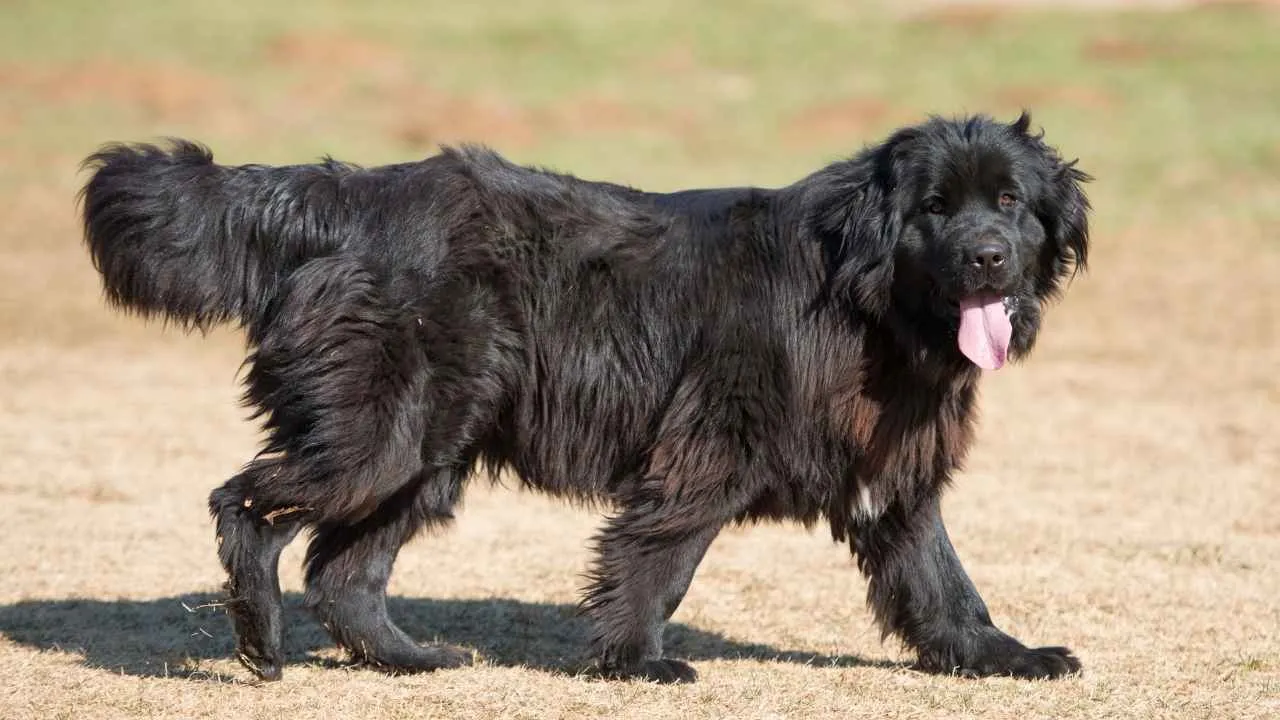
The Newfoundland is a gentle giant famous for its amazing water rescue skills. These dogs don’t just pull heavy loads on land—they’re strong enough to tow a fully loaded boat and even pull people out of the water during emergencies. Their natural swimming ability, paired with a thick, water-resistant coat, makes them incredible lifesavers.
This breed began as a rescue work dog on Newfoundland Island, where it helped fishermen by hauling nets, dragging carts, and saving people from drowning.
With their muscular build and strong endurance, Newfoundlands can swim long distances in icy waters, making them perfect for cold climates. Even today, some work as lifeguard dogs, pulling people safely to shore.
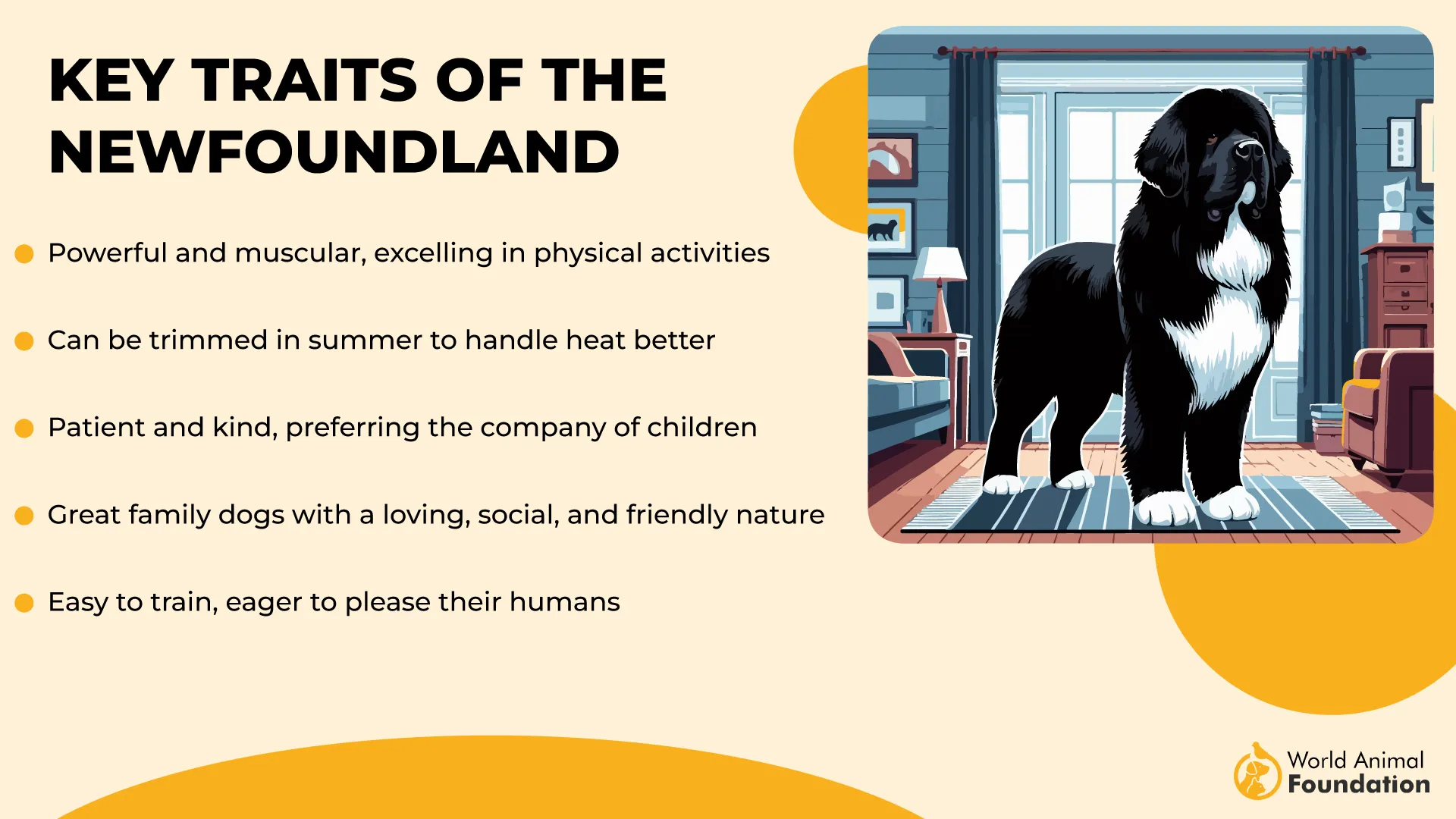
Despite their size, Newfoundlands are calm, patient, and extremely loyal. They’re known for being wonderful with kids and make great family pets for experienced owners who have space and access to water. With proper training and socialization, they’re not only excellent workers but also affectionate companions.
Quick Facts
Height: 28 inches (average male); 26 inches (average female)
Weight: 130-150 pounds (male); 100-120 pounds (female)
Lifespan: 9–10 years
Energy Level: Moderate
4. Siberian Husky
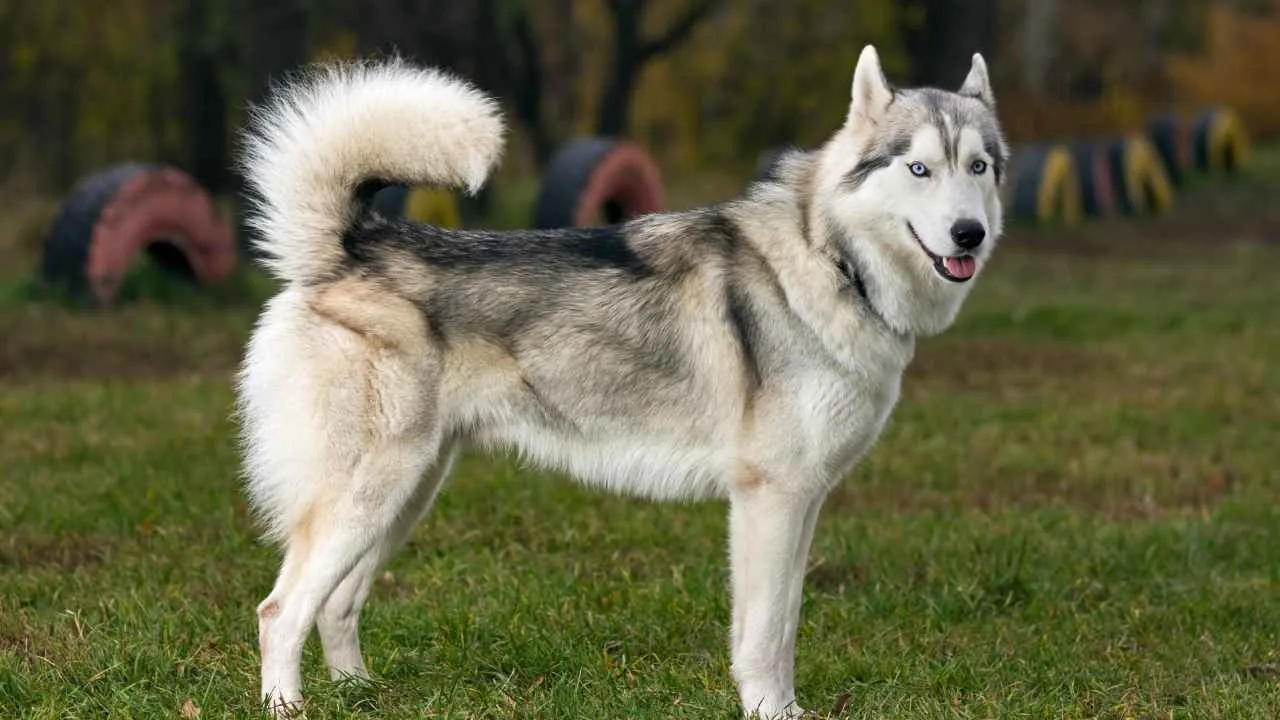
The Siberian Husky is a legendary sled dog known for unmatched endurance. Unlike the heavier Alaskan Malamute, Huskies were bred for speed and stamina, capable of running over 100 miles a day while pulling heavy sleds across snowy terrain.
This breed’s story began around 3,000 years ago with the Chukchi tribe in Siberia. They bred the Chukchi dog—an ancestor of today’s Husky—to carry heavy loads on long hunting trips in cold climates. These dogs developed warm, dense coats and an efficient metabolism, allowing them to travel far on minimal food.
Today, Huskies still have the same high energy, intelligence, and athletic ability. They’re strong yet lightweight, making them perfect for covering long distances. But they can also be stubborn, vocal, and dramatic—famous for their playful “tantrums.”
With proper training, socialization, and lots of mental stimulation, they can make great family pets for active families who can keep up with their exercise needs.
Quick Facts
Height: 21-23.5 inches (male); 20-22 inches (female)
Weight: 45-60 pounds (male); 35-50 pounds (female)
Lifespan: 12–14 years
Energy Level: High
5. Bernese Mountain Dog
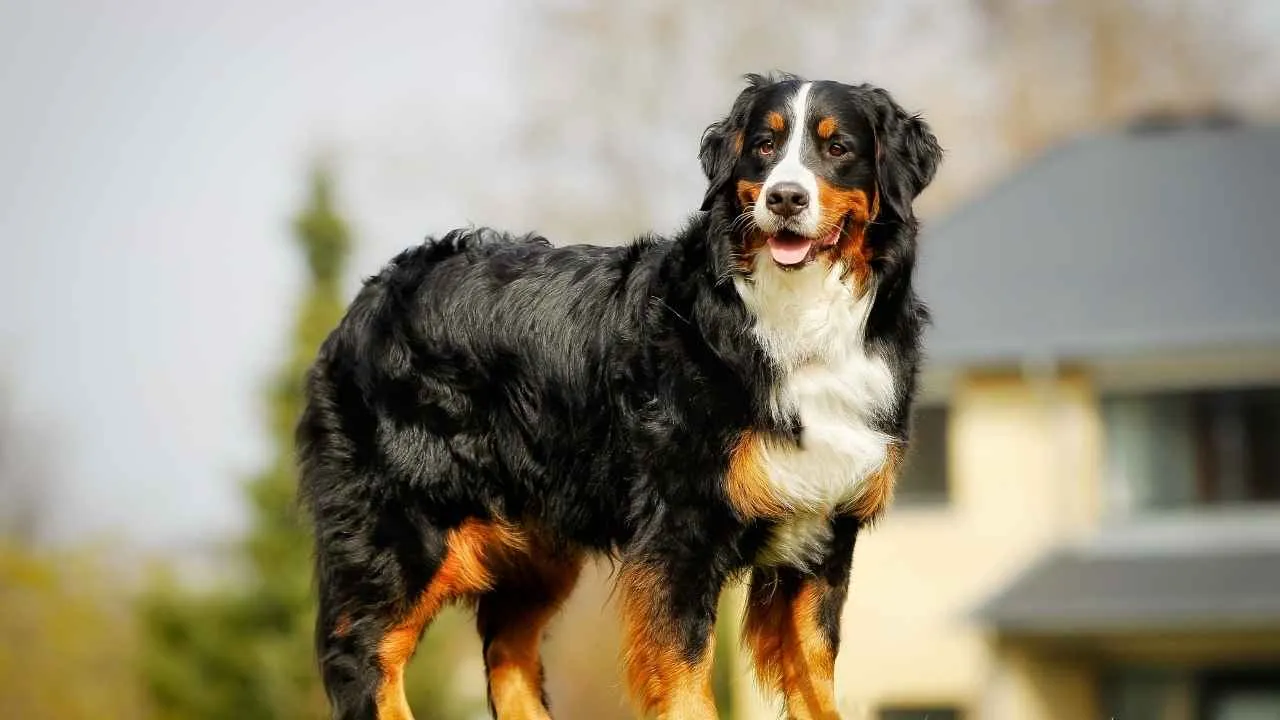
The Bernese Mountain Dog is a hardworking Swiss breed with a history of hauling supplies through rugged mountain roads. Farmers once relied on them to pull carts filled with milk, cheese, and other goods. With their broad chests, strong legs, and natural strong will, a well-trained Bernese can pull close to 1,000 pounds with ease.
Britannica states that their roots go back to Roman times, where their ancestors were used for herding cattle and hauling heavy carts. Even today, they love having a job to do and thrive when they feel useful. These dogs have high energy levels when working, but at home, they’re calm, affectionate, and eager to please.
Despite their deep bark, Bernese Mountain Dogs are too friendly to be excellent watchdogs, but they’re incredibly loyal to their families. With steady training, plenty of love, and proper care, they maintain both physical strength and emotional well-being, making them gentle giants with a soft side.
Quick Facts
Height: 25-27.5 inches (male); 23-26 inches (female)
Weight: 80-115 pounds (male); 70-95 pounds (female)
Lifespan: 7–10 years
Energy Level: Moderate
6. Rottweiler
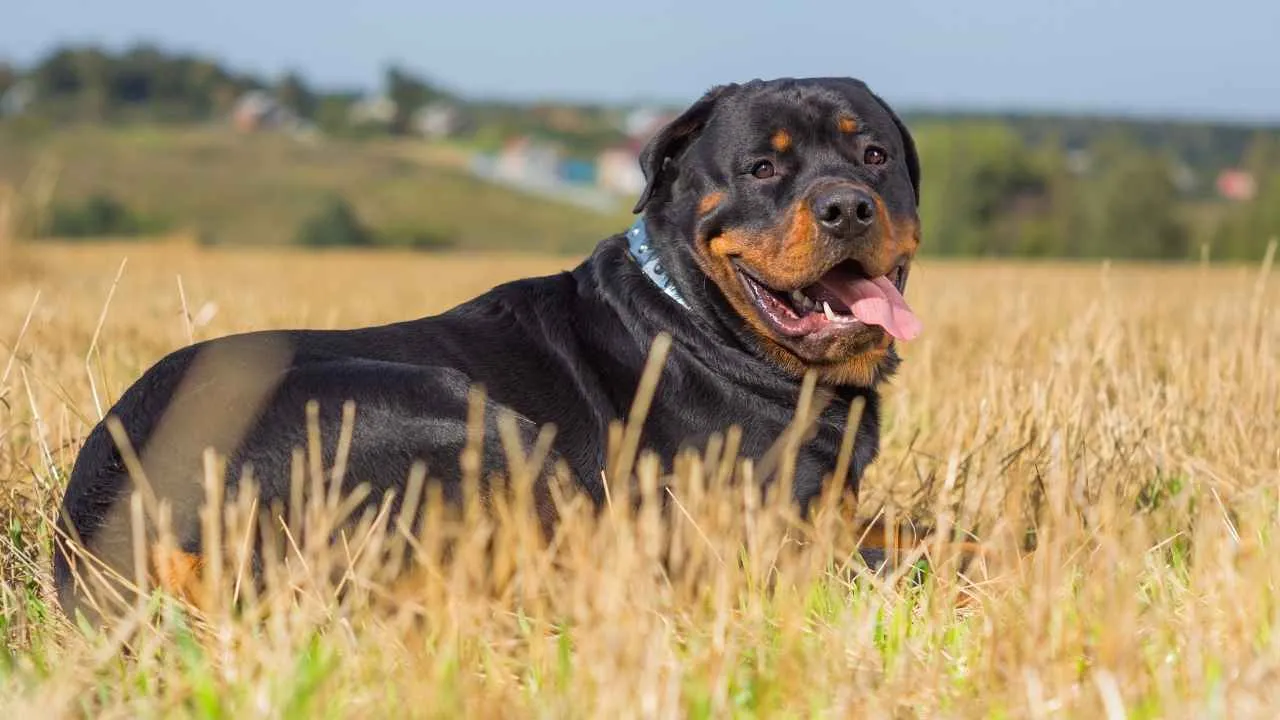
The Rottweiler is one of the oldest known breeds, with a history that stretches back to the Roman Empire. Their ancestors were used for herding and guarding livestock, protecting valuable animals on long journeys. In later centuries, these powerful dogs worked as butcher’s helpers in Germany, pulling carts loaded with fresh meat to markets.
Over time, Rottweilers took on even more roles. They’ve been trusted as guard dogs, rescue dogs, and even police dogs. Despite their tough appearance, they have a surprisingly playful and goofy side, showing a softer personality when they’re with the people they love.
Because of their size and strength, Rottweilers do best with experienced owners who have time for consistent training and plenty of physical activity.
They’re loyal and eager to work, but their natural tendency to nudge objects—or even people—means they’re better suited to homes without small children or anyone prone to falling.
Quick Facts
Height: 24-27 inches (male); 22-25 inches (female)
Weight: 95-135 pounds (male); 80-100 pounds (female)
Lifespan: 9–10 years
Energy Level: Moderate to High
7. Mastiff
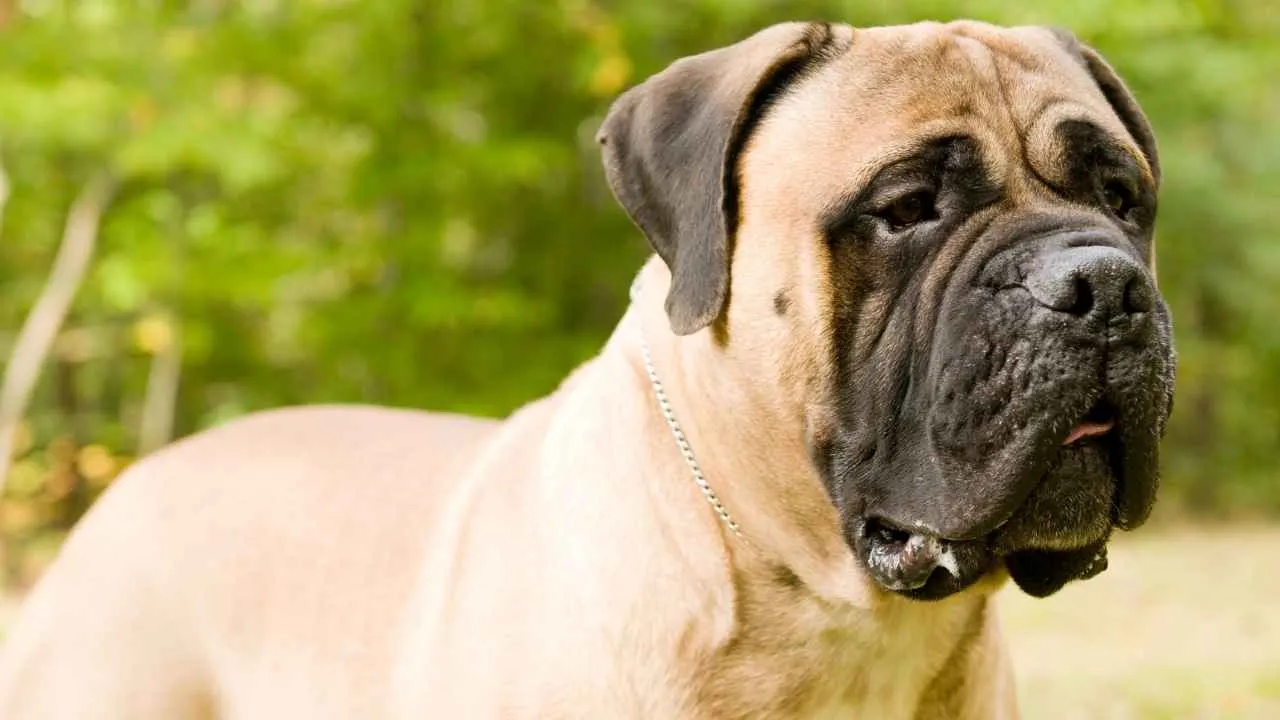
If you want raw strength, the Mastiff is unmatched. These massive dogs have been around since the past—as early as 3000 BCE—and were valued for their incredible power. Some can weigh over 230 pounds and have a bite force of 552 PSI, making them one of the strongest breeds in the world.
Mastiffs are muscular and built like tanks. In weight-pulling contests, they’ve been known to drag up to 2,500 pounds—about the weight of a grown bison. Despite their intimidating size, they’re patient and gentle, showing smart instincts and calm traits that make them surprisingly lovable companions.
To truly thrive, these dogs need consistent, positive training from confident owners who understand their strengths. With the right approach, Mastiffs can work well in a team and remain loyal family protectors. They may not be sled dogs, but their sheer size and dedication prove they’re just as hardworking.
Quick Facts
Height: 30 inches & up (male); 27.5 inches & up (female)
Weight: 160-230 pounds (male); 120-170 pounds (female)
Lifespan: 6–10 years
Energy Level: Moderate
8. Great Dane
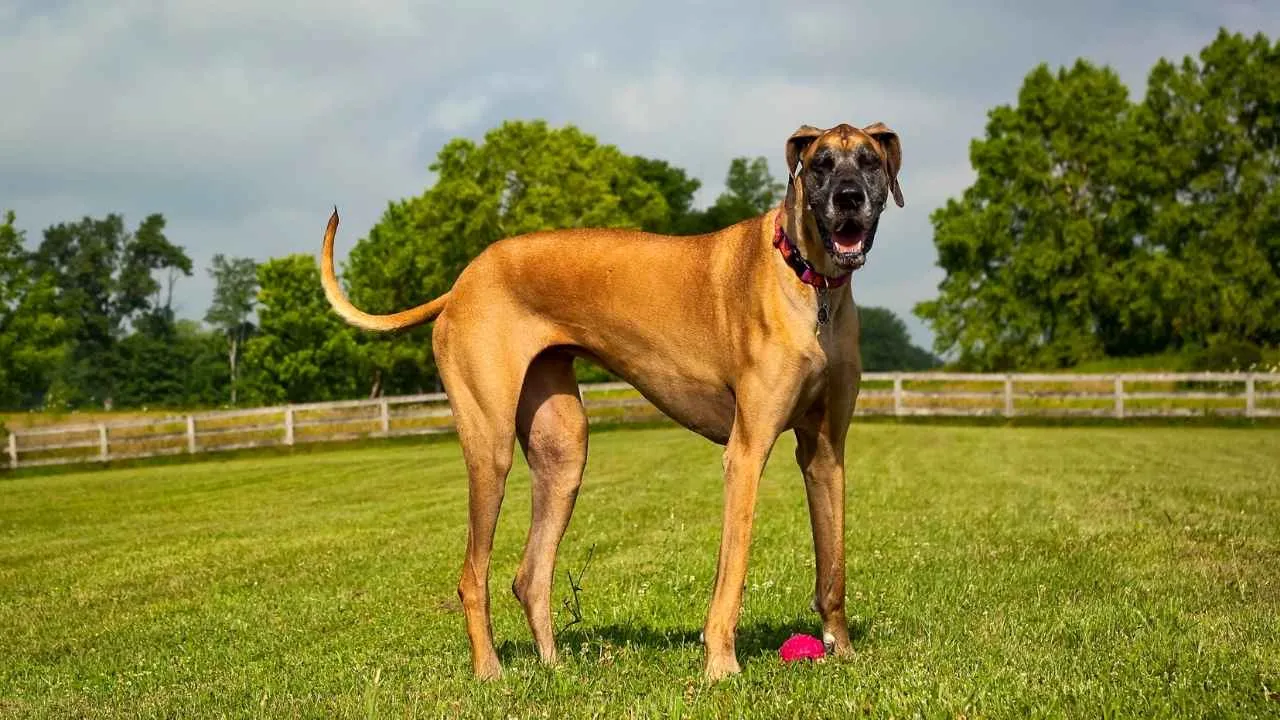
AKC says that the Great Dane is known as the “Apollo of dogs,” and is both elegant and incredibly strong. Originally bred in Germany during the Middle Ages, they were powerful boar hunters capable of holding down prey weighing over 300 pounds. Despite their tall, lean frame, they have surprising strength in their long legs and can drag serious weight when trained.
While they’re better known for their gentle personalities today, these giants once served as guardians and even as war dogs during ancient times. Over the years, breeders softened their hunting instincts, giving them calmer traits that make them friendly, loyal companions.
Great Danes have an extremely powerful bite force measuring 238 PSI—not the most extreme, but enough to show their capability as strong protectors. Though they’re not typically used for police work, their size and presence alone are often enough to deter threats.
Quick Facts
Height: 30-32 inches (male); 28-30 inches (female)
Weight: 140-175 pounds (male); 110-140 pounds (female)
Lifespan: 7–10 years
Energy Level: Low to Moderate
9. Anatolian Shepherd
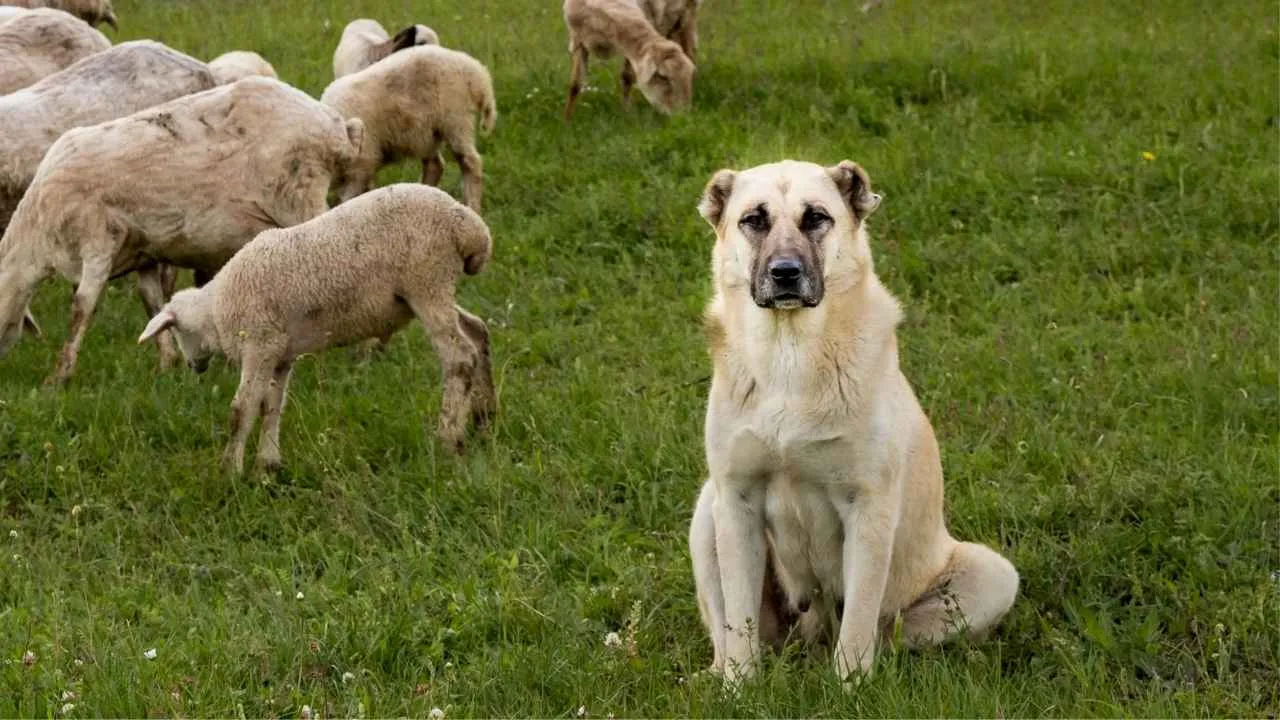
The Anatolian Shepherd is a fearless protector with a long history of guarding livestock. Originating in Turkey, these powerful dogs were bred to defend herds from some of the fiercest predators, including wolves, bears, and even mountain lions. Their size, strength, and sharp instincts made them indispensable to farmers in rugged, remote regions.
While they are best known for protecting animals, Anatolian Shepherds are also incredibly strong and capable of hauling and working alongside humans when needed. Their sturdy frame and natural endurance mean they can adapt to demanding tasks, making them a valuable working partner beyond guarding.
Despite their imposing nature, Anatolian Shepherds can be calm and devoted to their families. They are highly independent and prefer space to roam, making them better suited for homes with land rather than small apartments.
Quick Facts
Height: 29 inches (male); 27 inches (female)
Weight: 110-150 pounds (male); 80-120 pounds (female)
Lifespan: 11–13 years
Energy Level: Moderate
Conclusion
Strong, hardworking dogs have supported humans for thousands of years, from hauling supplies and guarding livestock to saving lives in harsh conditions. Their power, endurance, and loyal nature prove just how versatile and dependable they can be when given the right training and care.
Apart from the breeds we mentioned above, there are other dogs as well. These include German Shepherds, Greenland Dogs, Belgian Malinois, Alaskan Huskies, Rhodesian Ridgebacks, Kangals, and Leonbergers.
While these dogs excel at demanding tasks, they also need proper guidance, space, and attention to thrive truly. With patience, consistent training, and plenty of mental and physical stimulation, these incredible companions can balance their hardworking instincts with a loving and gentle side, making them both reliable partners and devoted family friends.


